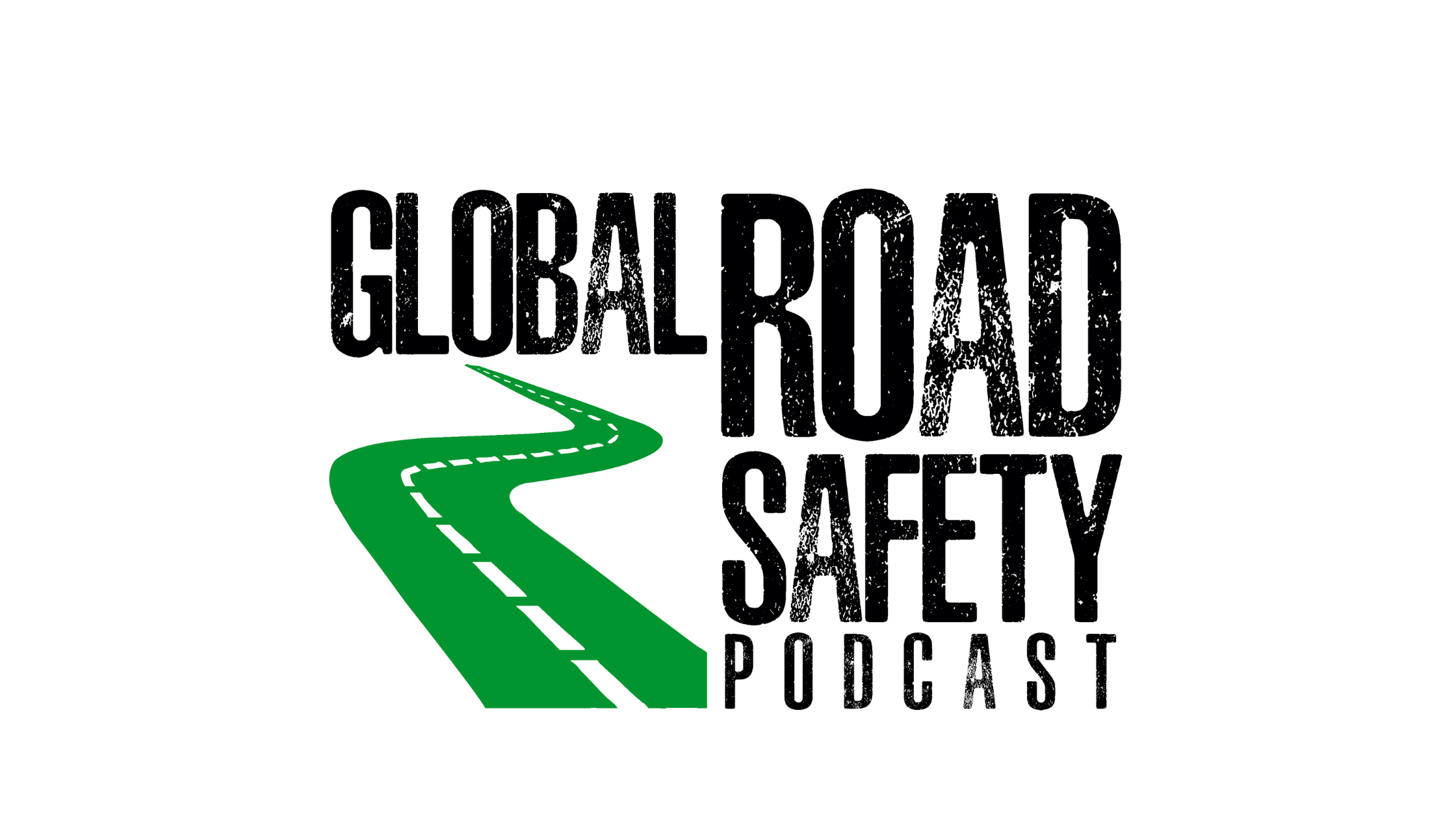
Whether you spend most of your time on the field or behind the wheel, your visual-motor skills have a massive impact on your performance. Tony Douglas, President and CEO of Smith System, spoke with Dr. Sherylle Calder and Andrew Crickmay about the importance of developing seeing skills — and how Dr. Calder’s EyeGym is helping athletes and drivers alike.
Listen to the Episode
A Different Point of View
As a young athlete, Dr. Calder recognized early that she, quite literally, saw things differently than other people. This awareness paired with her natural curiosity led to her innovative research on visual motor skills and athletic performance.
“I started from a really young age. I was intrigued and inquisitive about the fact that you could use your eyes in a certain way… I started playing field hockey for South Africa and through those experiences I realized at some point that I do see differently and do things differently. And then got to the point where I started doing my research and showed that if you use your eyes and your brain and your body in a certain way, you can impact performance.”
Specializing in visual-motor performance for more than 30 years, Dr. Calder has worked with athletes around the world to improve seeing skills and performance.
“The bulk of my work has been in elite sports and all the research I did was on international athletes... I gave them training programs and I taught them how to use their bodies effectively in the specific sport that they play, and then showed that by using these skills you impact performance significantly.”
Through her years of research, Dr. Calder discovered that performance is directly tied to the individual skill — something that, in most cases, is completely trainable.
“It’s not really about the sport or what you are involved in, it’s about how you as an individual develop your skills and how you use them effectively. We all have these strengths and weaknesses in our system and they can be improved. And that’s the exciting thing about the work I’ve done — that you’re not born with certain eyes and a certain brain and certain skills. These skills are all trainable. And through that research and work with all of these elite athletes, I showed that you can create training programs to improve the eyes, the brain, and decision making.”
Taking Our Eyes to the Gym
Studies show that increased screen time impacts vision, but how much does it impact overall job performance? According to Dr. Calder, excessive screen time negatively impacts memory, visual awareness, and attention span.
Her training program, EyeGym, focuses on visual awareness training that counters the harmful effects of excessive screen time. To date, EyeGym has been used by elite athletes and professionals across industries to improve performance and enhance their careers.
“We take your eyes and your brain and your motor skills to the gym. We’ve found ways, and done the research, to show that if you train the eyes, the brain, and the motor response in these different kinds of ways, we impact the performance.”
The program starts by identifying the individual’s visual awareness, reaction time, eye-tracking, and decision-making skills. EyeGym is then able to provide personalized training based on the person’s strengths and challenges.
“The important thing is to remember that we’re not good at all of our skills. We identify the ones you’re not good at and we make them better and we take the good skills and can make them better as well... When you train in the Eye Gym, you train the whole suite of skills, which then opens up these new things to see and process and respond to.”
Eyes on the Road
Andrew Crickmay, Managing Director of Driver Bureau South Africa, was always fascinated by the individual impact that drivers have when it comes to productivity and safety. He developed Driver Bureau’s Visual Performance Journey (VPJ), an E-Learning platform that integrates with EyeGym, used by Mining, Manufacturing, and Trucking companies to reduce their exposure to human error.
“We’ve done a lot of work in the field industry and we’ve done a lot of work in underground mines. So one of the biggest coal mining companies in South Africa has introduced the Visual Performance Journey across all of their mines. Every worker, every machine operator, does our induction program which is an hour-long program at the beginning of every year. And then a portion of those do the EyeGym training. The induction process is focused on self-understanding. A lot of people think a certain way… They think they’re very good but they’re actually not. So your self-understanding is critical.”
Approximately 6,000 people participate in the VPJ program annually. To date, Crickmay has seen a 14% reduction in driving incidents with the introduction of the one-hour program, according to data from telematics. These results show clearly how theory and application work hand-in-hand to improve safety.
“We could have the best theory in the world, but it has to be shown on the machine… We can measure the EyeGym scores. We can look at the training the person has done. We can look at the incidents... And with that, we begin to build a picture. Not only on who we should be training on the EyeGym program but also, specifically what other training does the person need? We can see from the history of training and the EyeGym results what person we should be training — long before there’s an accident.”
Many of the challenges in road safety today lie in getting the highest level of an organization involved with the source of risk — the driver. In Crickmay’s experience, businesses have high expectations of their drivers but don’t provide enough feedback to help them succeed.
“If you look at the supply chain there’s probably eleven levels between the CEO and the driver. Especially if you’re running an outsourced operation. The driver is so far away from the CEO... We’re trying to control the driver, but we forget that it's a judgment error. So we’re excited about this field because we have a base from EyeGym which is so successful. We’re enjoying applying it to companies that see things the same way that we do.”
Seeing is Believing
With so much time and resources put into improving vehicle systems, many companies are missing a key piece of the puzzle when it comes to investing in safety — their drivers. However, companies are beginning to see first-hand the impact that proper training has on driver safety and the bottom line.
When it comes to driving, Dr. Calder says it’s all about picking up on the information around you and making safe decisions. Decision-making and judgment skills deteriorate over time, so safety-minded businesses should focus on visual-motor training to improve driver performance.
“Some people think that they have really good reaction times, but when you put a decision in it that’s the difference. And that’s exactly what happens when you drive. It’s quickly picking up information and making decisions based on what you should be doing. Those are trainable skills. And we can measure that and we can train you and reassess you and show how you’ve improved on these skills. In a 10-minute training in the EyeGym, you can make between 500 and 600 decisions based on something you haven’t seen before. The other important skill is judgment, which is also deteriorating because of these screens so close to our eyes. The earlier you pick up information, the more time you have to make a decision... Lastly, I would say that if you haven’t trained these skills you’re underperforming as a driver. The skills that you have — we can make them better.”
Crickmay agrees — when it comes to on-road safety, the eyes have it.
“It’s an important piece of the puzzle. It’s not the whole piece, but it’s like creating a jigsaw puzzle and you’re missing a really big piece.”
About Our Guests
 Dr. Sherylle Calder, Visual Sports Scientist, and Coach
Dr. Sherylle Calder, Visual Sports Scientist, and Coach
EyeGym develops visual skills that enable people to make quick and informed decisions, especially in the age of digital distractions. In 2017, Calder made headlines when she instructed the England rugby players to limit their exposure to smartphones, as research had shown that excessive use impacted the ability to focus and process information. According to Dr. Calder, mobile device addiction can deteriorate memory, visual awareness, and attention span. Her program, EyeGym, focuses on visual awareness training that counters the harmful effects of excessive screen time. To learn more about Dr. Sherylle Calder and the EyeGym, visit EyeGym.com.
 Andrew Crickmay, Managing Director of Driver Bureau South Africa
Andrew Crickmay, Managing Director of Driver Bureau South Africa
Andrew Crickmay is the Managing Director of Driver Bureau and co-founded RTMS (Road Transport Management System) which has become the face of Transport sustainability in Southern Africa. Driver Bureau’s Visual Performance Journey (VPJ) is an E-Learning platform, integrated with EyeGym, used by Mining, Manufacturing, and Trucking companies to reduce their exposure to human error. Approximately 6,000 people participate in the VPJ program annually. To learn more about Driver Bureau, visit DriverIB.com.
Featuring interviews with safety experts and leaders, Global Road Safety is an initiative to reduce crashes and save lives — across every continent. The Global Road Safety podcast is produced by Smith System, the leader in crash-avoidance driver safety training.









